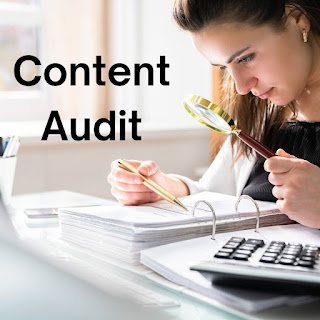An SEO audit report is a comprehensive analysis of a website's current state of optimization for search engines. It identifies issues that may hinder the site's performance and provides actionable recommendations to improve visibility and ranking. Here's a full overview of what an SEO audit report typically includes:
1. Website Health Overview
Summary: A snapshot of the website’s overall SEO health, including the number of issues found, the severity of those issues (critical, warning, or informational), and a general score or grade.
Priority Areas: Highlight the most urgent areas that need attention for quick wins.
2. Technical SEO Analysis
Crawlability: Assessment of how easily search engines can crawl the website, checking for issues like broken links, redirects, and server errors.
Indexing: Review of how well the website’s pages are indexed by search engines. This includes checking for issues like duplicate content, XML sitemap, robots.txt file, and canonical tags.
Site Speed: Analysis of the website’s loading speed on both desktop and mobile devices. Recommendations for improving speed, such as optimizing images, leveraging browser caching, and minimizing JavaScript.
Mobile-Friendliness: Evaluation of how well the site performs on mobile devices, including responsive design, touch-friendly elements, and mobile usability issues.
SSL/HTTPS: Checking for SSL certificates and ensuring that the site is secure with HTTPS.
3. On-Page SEO Analysis
Title Tags & Meta Descriptions: Review of title tags and meta descriptions for relevancy, length, and keyword optimization.
Headings (H1, H2, etc.): Analysis of the use of headings to ensure they are structured properly and include relevant keywords.
Content Quality: Evaluation of the content’s relevance, keyword usage, originality, and overall quality. It also checks for thin content and duplicate content issues.
Keyword Optimization: Review of how well keywords are integrated into the content, titles, meta descriptions, and headers.
Internal Linking: Analysis of the website’s internal linking structure, ensuring links are used effectively to pass authority and guide users.
Image Optimization: Checking that images have appropriate alt text, are properly compressed, and are relevant to the content.
4. Off-Page SEO Analysis
Backlink Profile: Examination of the website’s backlinks, including the number, quality, and relevance of incoming links. It also identifies toxic or spammy links that may harm the site’s reputation.
Social Signals: Review of the website’s presence and activity on social media platforms, including likes, shares, and mentions.
Brand Mentions: Analysis of how often and where the brand is mentioned online, even without direct links, and the sentiment of those mentions.
5. Competitor Analysis
Competitor Comparison: Benchmarking the website against its main competitors in terms of traffic, backlinks, keyword rankings, and content.
Keyword Gap Analysis: Identifying keywords competitors are ranking for that the website is not, providing opportunities for content creation or optimization.
6. Local SEO (if applicable)
Google My Business: Evaluation of the Google My Business listing, ensuring accuracy in NAP (Name, Address, Phone Number), categories, and business descriptions.
Local Citations: Checking the consistency and accuracy of the website’s information across local directories and citation sites.
Local Reviews: Analysis of online reviews and ratings on local platforms, including recommendations for improving customer feedback and engagement.
7. Content Audit
Content Performance: Reviewing the performance of existing content, identifying high-performing pages, and underperforming content that needs updating or pruning.
Content Gaps: Identifying content opportunities based on user intent, industry trends, and competitor content.
Content Strategy: Recommendations for future content creation, targeting specific keywords, and improving user engagement.
8. User Experience (UX)
Navigation and Structure: Analysis of the website’s navigation, ensuring it’s user-friendly and logically organized.
Design and Usability: Review of the website’s design, focusing on user experience, accessibility, and ease of use.
Conversion Rate Optimization (CRO): Identifying barriers to conversion and providing recommendations for improving calls-to-action, forms, and user flows.
9. Analytics & Reporting
Traffic Analysis: Overview of the website’s traffic sources, user behavior, and key metrics like bounce rate, time on site, and pages per session.
Goal Tracking: Ensuring that goals (e.g., form submissions, purchases) are set up and tracking properly in Google Analytics or other analytics tools.
Performance Metrics: Reporting on key performance indicators (KPIs) like organic traffic growth, keyword rankings, and conversion rates.
10. Actionable Recommendations
Priority Fixes: A list of prioritized recommendations based on the severity of the issues found. This section should include both quick wins and long-term strategies.
Implementation Plan: A suggested roadmap for implementing the recommendations, with timelines and resource considerations.
11. Conclusion
Summary of Findings: Recap of the key issues identified and the potential impact on the website’s SEO performance.
Next Steps: Clear guidance on what steps to take next, whether that’s implementing changes, seeking professional help, or ongoing monitoring.
12. Appendix (if applicable)
Detailed Technical Data: Any detailed technical data, logs, or specific code recommendations that may be relevant for developers or IT teams.
Tools & Resources: A list of the tools used for the audit and any additional resources or references for further reading.
This report should be presented in a way that’s easy to understand for both technical and non-technical stakeholders, ensuring everyone involved knows the current state of the website and the path forward for improving its SEO performance.





Comments
Post a Comment